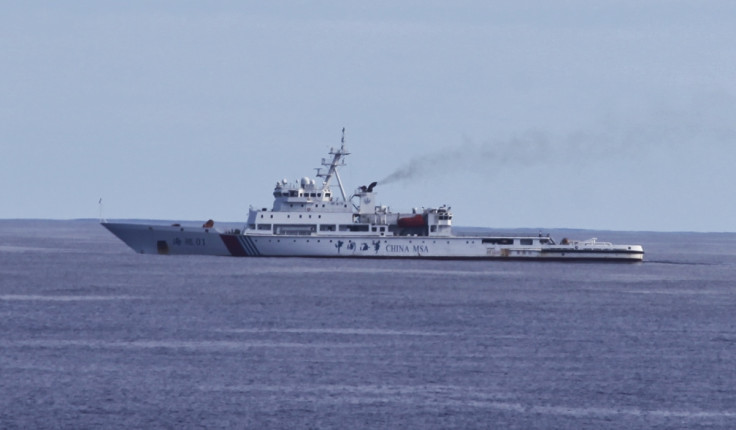Malaysia Airlines MH370: Search Area Narrows as Cyclone Blamed For Lack of Debris

The search for the missing Malaysia Airlines plane has narrowed, after more signals were heard earlier this week.
Thursday's search will involve 14 aircraft and 13 ships across 57,923 sq km, roughly triple the size of Wales, which is the smallest designated search area since the hunt for the Boeing 777 began.
On Wednesday, Air Chief Angus Marshall, head of the Australian agency coordinating the search, said he was "optimistic" that the teams will find the aircraft in the "not too distant future". He added that they were looking "in the right direction".
Earlier this week, officials detected two new signals in the hunt for the missing plane. Houston said the "pings" would help create a "much more manageable search area on the ocean floor".
The search is being conducted from the Australian city of Perth, to look for possible wreckage and audio signals from the plane's "black box" flight recorders.
Malaysia Airlines MH370 disappeared on 8th March, with 239 passengers and crew. It was travelling from Kuala Lumpur to Beijing when it lost contact with air traffic controllers.
Malaysian officials have said the flight ended in the southern Indian Ocean, as the aircraft diverted away from its original flight path.
Black Boxes
Using a US Navy "towed pinger locator", four acoustic signals have been picked up in the area so far. The first signals were heard at the weekend.
Houston stated that expert analysis of the first two signals revealed they were likely to be from specific electronic equipment which would be consistent with a flight data recorder.
Time is running out, however, as the battery-powered black boxes have already reached the end of their 30-day life expectancy. The flight data recorder and the cockpit voice recorder are now operating on "bonus time", as teams scramble to locate the equipment.
David Kaminski-Morrow, the air transport editor of Flightglobal, told Channel 4 News that the flight data recorder would "indicate if something had gone wrong with the flight".
But he added that information available on the cockpit voice recorder may be limited: "The cockpit voice recorder may not be so useful as it is likely to only record conversations in the cockpit for the last two hours of the flight and so will not tell us about what might have gone on before that."
Lack of debris
Experts at the Malaysian Airlines Flight MH370 Joint Agency Coordination Centre believe there are two explanations for the lack of debris on the ocean surface.
As reported by Perth Now, the aircraft was either flown under control into the water and sank in one piece, or the wreckage of the jet was scattered by a cyclone which passed through the area shortly after the search began.
In late March, Cyclone Gillian set off a cyclone warning in the southern corridor, which may have dispersed pieces of wreckage far and wide. The current search teams have not been able to find any debris in the hunt so far.
Yet it is also possible to "ditch" an airliner in one piece, depending on the weather and water conditions.
A source told Perth Now: "It is painstaking work to scour a massive area but we are perplexed about the lack of wreckage. We expect to find some debris such as the wing (fuel) tanks that are air tight and would float."
© Copyright IBTimes 2025. All rights reserved.






















